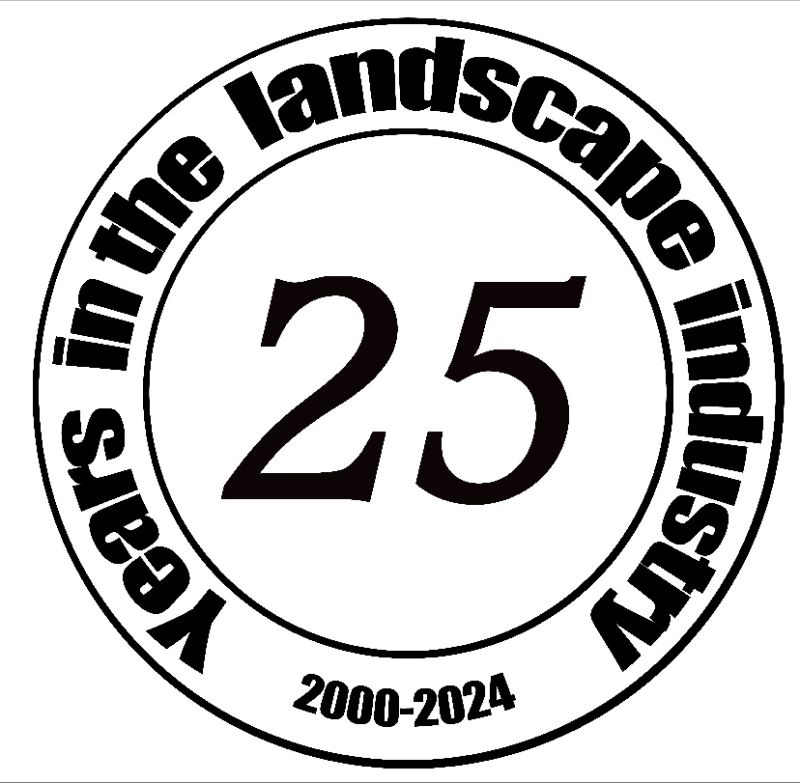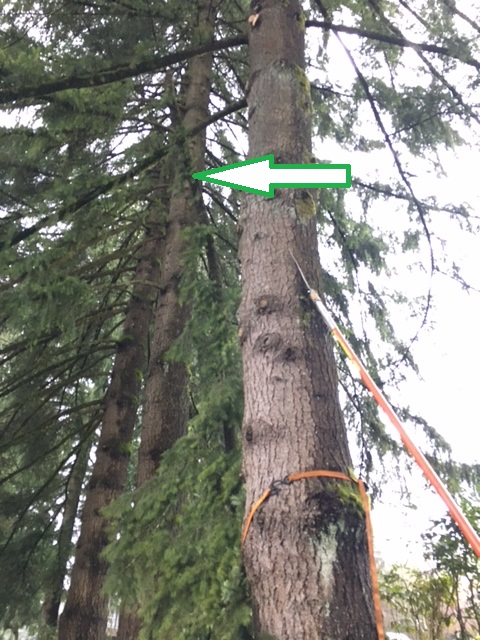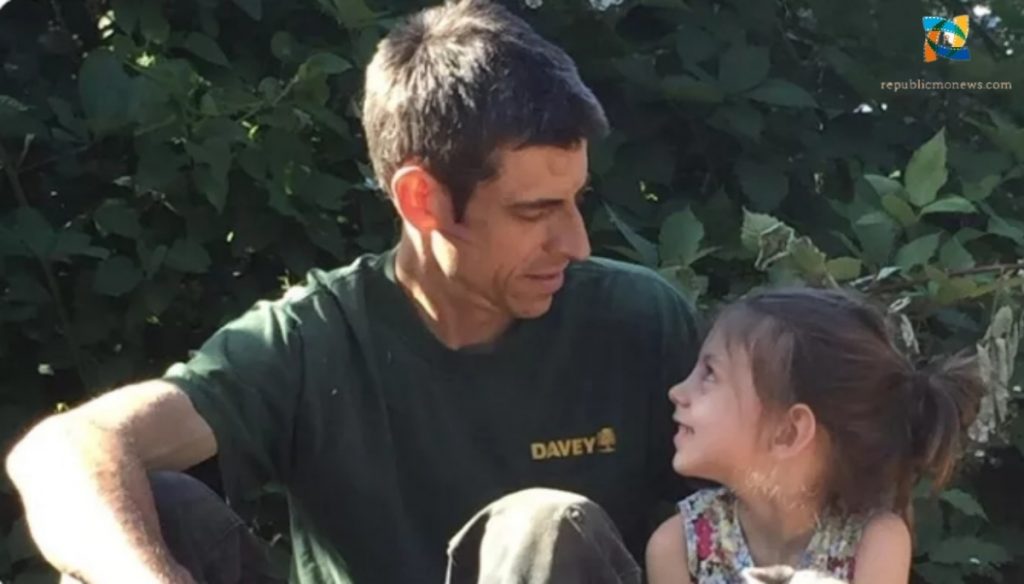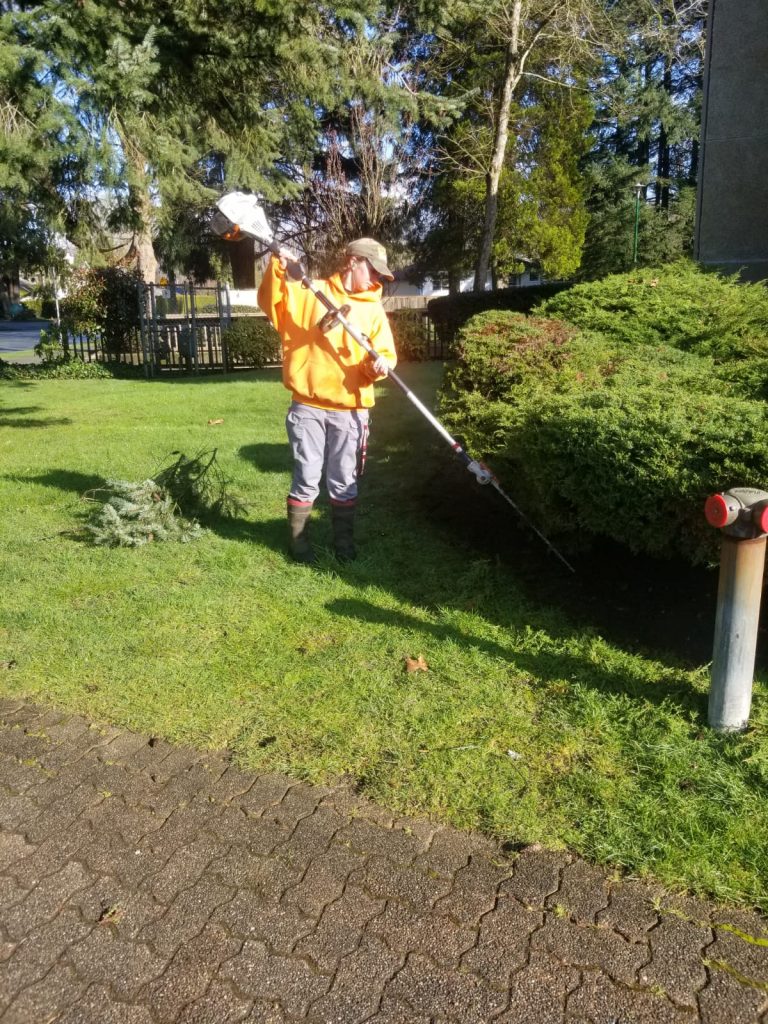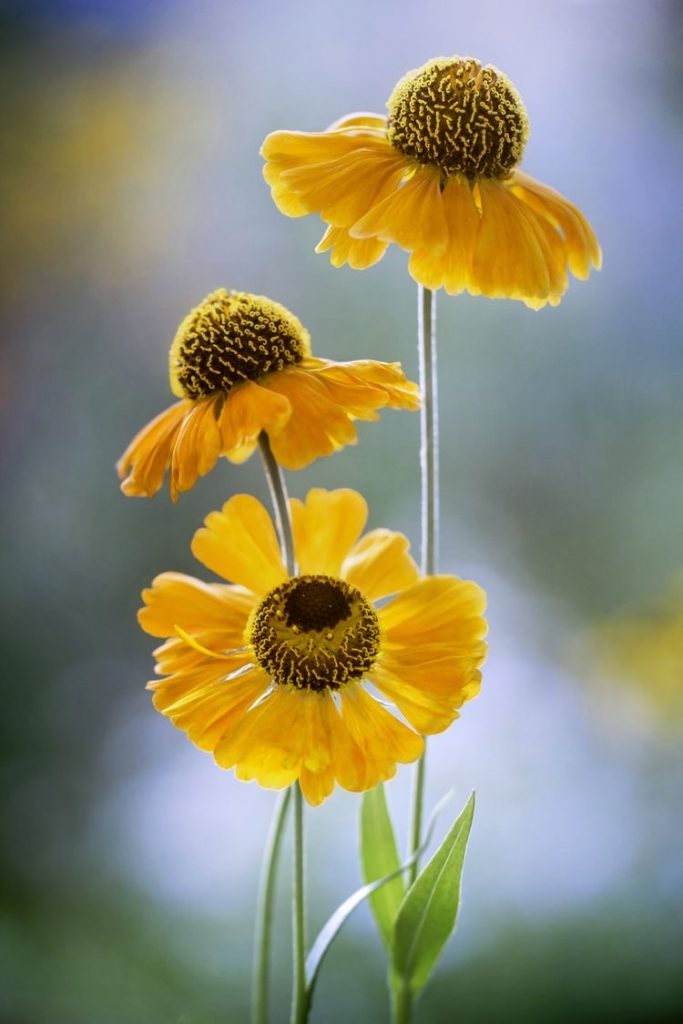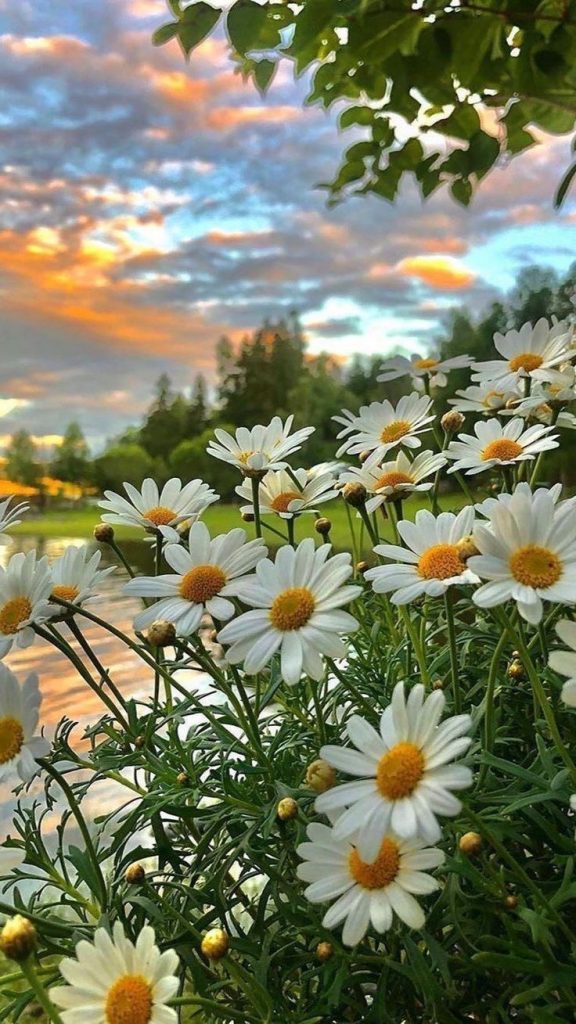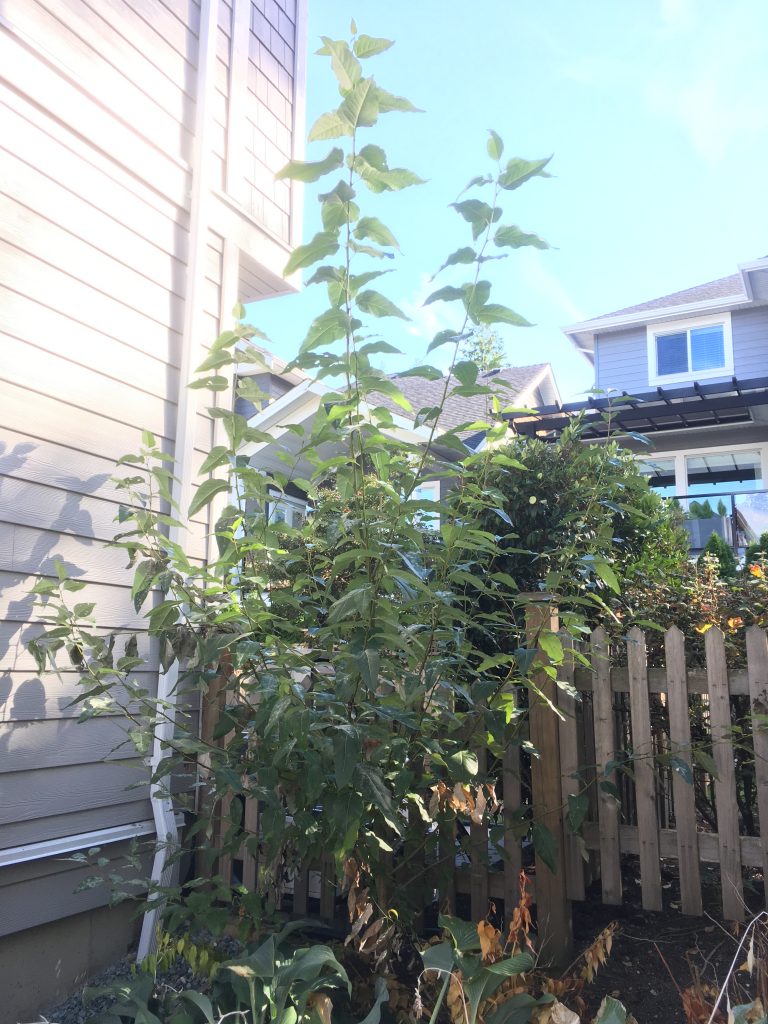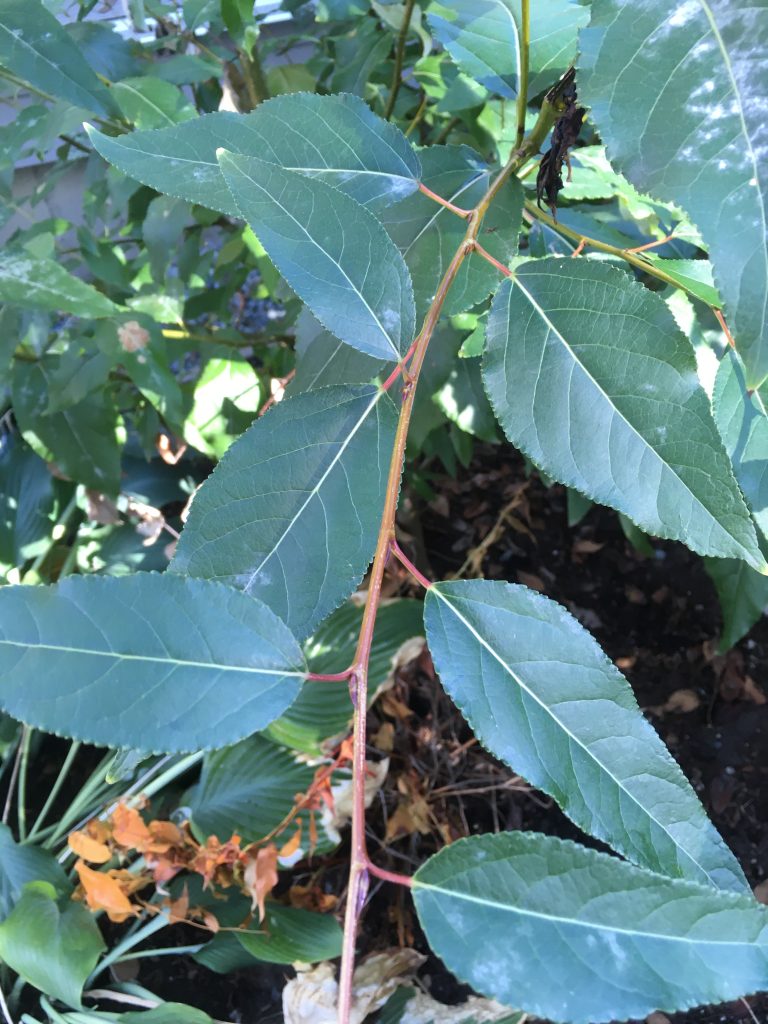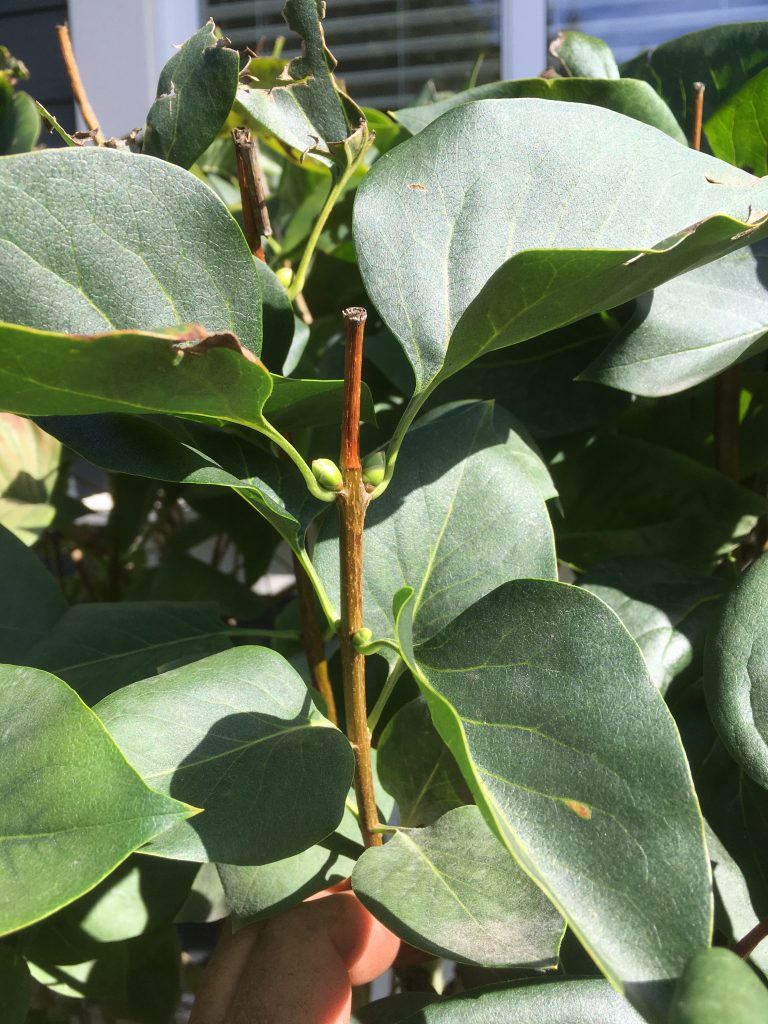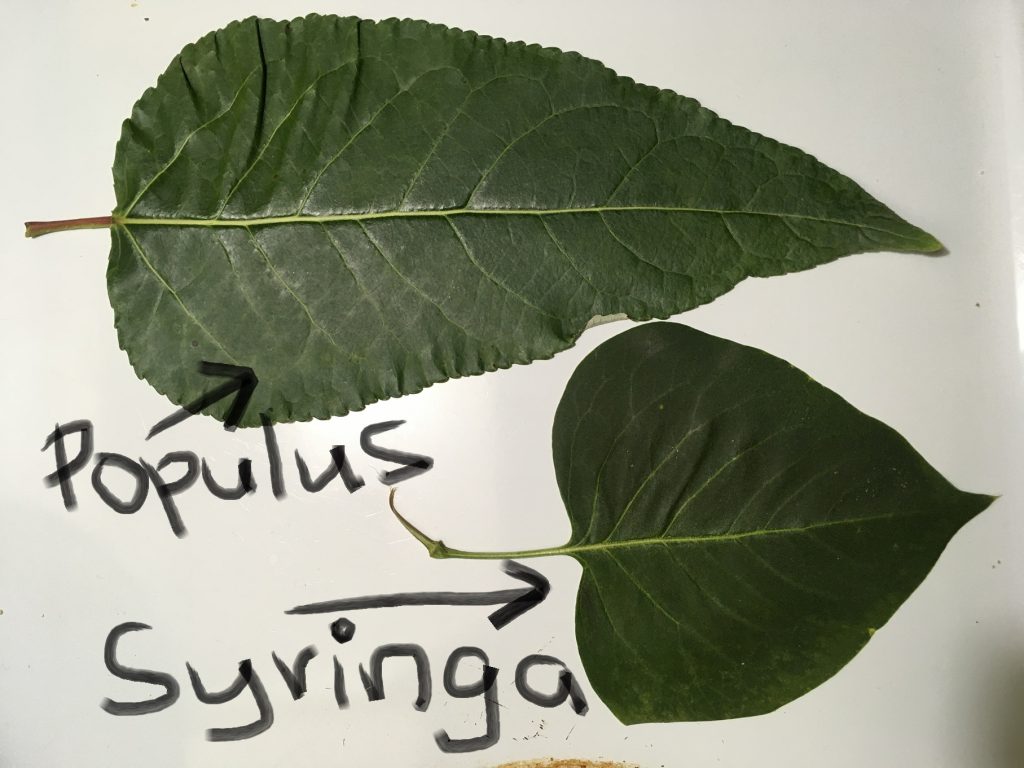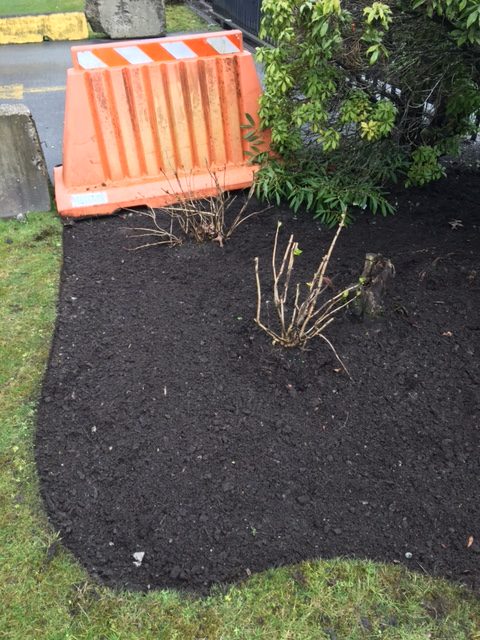Whoa!
I have a residential client in New Westminster whose property borders a popular municipal park. When I blow the boulevard down slope I often nudge the debris into the park and quickly walk away. But when I did that last weekend, I was in for a shock!
Right in front of me was a new native planting complete with signs and irrigation hoses. Which means that soon the debris I blow in there from the boulevard will be less visible.

Rewilding
Now, I make good coin every year from lawn care, just like Proper Landscaping, but I don’t mind seeing a chunk of municipal lawn go missing. People generally hang out lower down in the park, not this close to the road, so it’s fine.
The City of New Westminster sign explains that the long grass you see was left like that on purpose to provide habitat for insects and birds. Plus, less mowing means less pollution and the new planting will increase biodiversity. Sounds good to me.
Test your plant identification skills
Obviously, I had to finish up my client’s place before it got dark and when I did, I took a quick walk down to see the native plants. This is a great way to test your plant identification skills and learn botanical names.
I will now show you several pictures so you can test yourself. Common names are a great start but do try to learn the botanical names as well. So scroll through the pictures and see how many you know. I will give you the list at the end.
See the natives








Meet the natives
Crataegus douglasii Hawthorn (note the stiff thorns)
Betula papyrifera Paper birch
Thuja plicata Western Red Cedar
Acer circinatum Vine maple
Acer macrophyllum Big Leaf maple
Abies grandis Grand fir
Picea sitchensis Sitka spruce
Alnus rubra Red Alder (very difficult to identify from the photo)
Well?
Well how did you do? Was it easy? I didn’t recognize the paper birch but the rest was easy. If you struggled then keep working on it. You can also volunteer to do native plantings like this which is a great way to learn plants and give back to your community.
Overall, this is a nice project. We’ll have native plants growing in a corner that wasn’t much used by park visitors anyway. I just hope the lawn care technician didn’t get fired.


